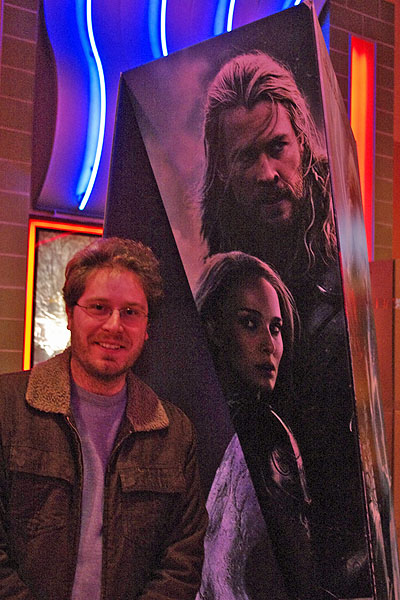Thor: The Dark World - True to Spirit, if not Letter, of original Comic CreationNovember 9, 2013
However, the story, although good, was lacking compared to the acting and photography. The craft of the technicians is extraordinary, and the ability of the casting and directorial departments to fill roles with outstanding choices of actors is laudable (particular credit to Tom Hiddleston as Loki). The physical resemblance of most of the talented actors to the Jack Kirby renditions of these iconic characters is remarkable and enhances the nostalgic enjoyment for those familiar with these much loved creations. Clearly, the original comics were an influence on this film, if not a guiding light. There was a fine balance of suspense, action and humor which made for a good story (the lighthearted moment with Thor on the London subway was truly memorable). Thanks to the efforts of the rest of the gigantic creative team, the movie itself was better than good, better than the mere screenplay itself. It was the screenplay which kept this excellent film from being perfect. The personality of the characters seemed not to earn the total respect of the writers: Thor's disobeyal of his father was not needed to launch that particular aspect of the story line where The Thunder God tries his own plan to fight the enemy against the All Father's wishes. Such a breach of obedience seemed unsupported by the relatively brief, though dramatic, events leading up to the mutiny; more importantly, the role of Thor as a leader and loyalist could have been enhanced had he simply convinced Odin that his own plan was worthy. Then the same 'escape from occupied Asgard' gambit could have been employed. The ease with which Thor was able to recruit mutineers against their King's battle plan made their reasoning too rash and human, and less regal. The general sense of the nobility of the characters was present, but not accentuated. The lack of the pseudo-Shakespearean dialect made the Gods slightly more human, especially when they would occasionally lapse into vernacular and even the convenient use of contractions. There were other more minor instances of infractions against the original development of these characters (the smiling of Hogun the Grim) and and incongruous mixtures of the modern and antique (a modern fire alarm sound in the dungeon of the castle, when a medieval bell would have been more consonant with the art direction). But the greatest oversight was the pantomime portrayal of the death of the Queen of Asgard - almost no acting was even scripted, and the scene lacked emotional depth. Thor displayed rage and grief and a futile attempt to use his hammer in revenge against the invaders - more disappointingly, the great actor Anthony Hopkins as Odin was shown in grief over his dead wife for the briefest of seconds in an underwhelming presentation of the death of a Queen. Most of the satisfied viewers of these films are not familiar with the Lee/Kirby blueprints for character profiling and plot development. But had such precepts been employed, a fine film would have been even better. That is what made these concepts, written and drawn in a 12¢ comic book, worthy of a multi-million dollar budget in the first place.
|
Back Home | Cartoon History Links Page
